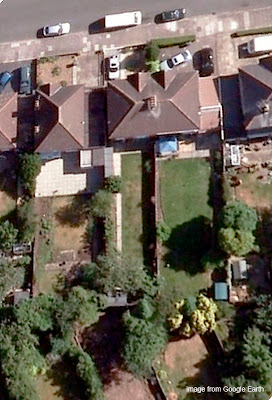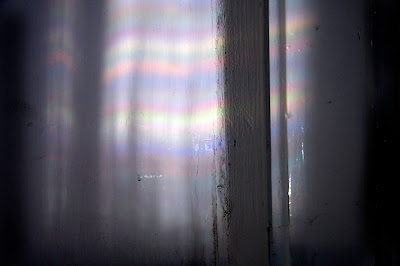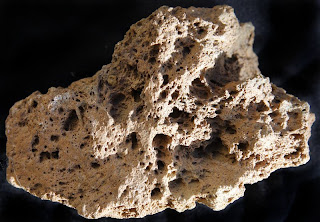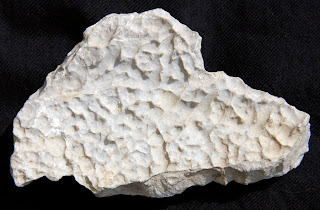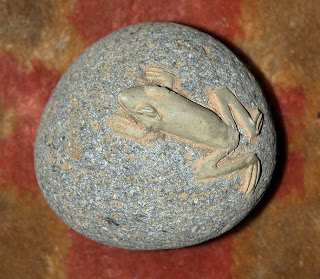On March 17th 1662, two elderly women were hanged in Bury St Edmunds, England. Rose Cullender and Amy Deny had been found guilty of
malevolent witchcraft. The prosecution case relied heavily on the 'evidence' based on the alleged victim's recall of their dreams.
On 7th October 1939, Vivian James was born in Kogarah, Australia. Due to vanity and/or machismo, he would later change his name because of a Hollywood movie.

On 3rd February 1975, in Buenos Aires, Argentina, Jorge Luis Borges wrote in the Afterword to his “A Book of Sand” ("El Libro de Arena"),
"In spite of John Felton, Charlotte Corday, and the well-known words of Rivera Indarte ('It is a holy deed to kill Rosas') and the Uruguayan national anthem ('For tyrants, Brutus’ blade'), I do not approve of political assassination."
On 24th March 1976, a military junta under General Jorge Videla overthrew the Perón government in Argentina. On 19th May, Borges, Ernesto Sabato and other writers met with Videla, expressing their support for the overthrowing of the Perónista terrors, and for Videla's stating that
"the development of culture is essential for the development of a Nation."
Between 1976 and 1983 an estimated 30,000 people were 'disappeared' by the Argentinian Dictatorship.
On 15th December 1983, writer Sabato became president of the newly-formed
National Commission on the Disappearance of Persons, the government-established commission empowered to investigate the 'disappearance' of persons in Argentina over the previous 20 years.
In 2007, in his book “Cultural Amnesia”, (the now) Clive James published a personal diatribe against Borges, confiscating his years of creative work and judging him posthumously guilty of
silence during the
Dirty War of the Argentinian Dictatorship (1976-1983). A few pages back James was eulogising about Sir Thomas Browne’s “infallible sense of cadence that could operate through a whole sentence, making it a long poetic line.” So what?
Well quite a lot of ‘what’ if you bother to look…

Browne, like Borges, has enjoyed a string of admirers, particularly for his 1658 work, ”Urn Burial”. Yet Browne is not known for noisily expressing his views on the genocidal activities of the regicidal dictator and Browne contemporary, Oliver Cromwell. Browne had identified himself with the Royalists during the Civil War, and had been subsequently knighted by Charles II, so it is unlikely that he was unequivocal about Cromwell. James may be forgiven for overlooking this silence, but he cannot be forgiven for deliberately ignoring Browne’s documented unsilent role in the Bury St Edmunds Witch Trials which materially led to the deaths of Rose Cullender and Amy Deny. Then James seems to have little interest in the lives of women, of the 890 pages of Cultural Amnesia, just 37 feature women. Adding insult to death, some pages further on in his book, James describes Jean Cocteau's actual mingling with the Paris Propaganda Staffel as "not admirable," and excuses him on the grounds that "nobody died because of him." Still, 90,000 French Jews were killed in WW2.
James praises Sabato, "whose fantastic novels were dedicated to including all the horrors of the real world, and raising them to the status of dreams, so that they could become apprehensible to the imagination, which would otherwise edit them into something more easily overlooked." This sounds like the very stuff that sent two innocent women to the gallows in 1662.
James claims Sabato was unsilent during the Dictatorship (but no citations), then rather shoots himself in the foot with, "that a man so out of touch with the regime as Sabato should nevertheless have seen merit in the Malvinas adventure is a token of how indisputable the claim to the islands looked from the Argentinian side." James fails to mention the 907 people pointlessly killed in the conflict.
It may also be true that James ignored Borges’ stated position on political assassination, or he may have ruled this out of bounds of the 1976 coup - by all of 13 months. Which leads one to ask for motive behind the diatribe, pitching himself alongside Browne and Sabato at the expense of Borges. Iconoclasm for self-aggrandisement?

The hindsight bias of Cultural Amnesia is peppered with snide comments, evincing a failed suppression of the would-be comic within. He ridicules the clinically-blind Borges' lack of awareness of the terror with, "a cocked ear would have heard the screams
(of those being tortured)". And though critical of Borges meeting with the Generals (left: Sabato, Borges and Videla), he's more than happy to brag about his meeting with Thatcher; and commenting that, "the opinions of intellectuals may be an adjunct to sound government but are no substitute for it." James comes over as the Jeremy Clarkson of criticism - a kicking pantomime horse desperately seeking attention. The attack on Borges is a most complete example of snide as whingeing vanity.
"Under all speech that is good for anything there lies a silence that is better. Silence is deep as Eternity; speech is shallow as Time." Thomas Carlyle, c 1881
Notes on the cast:
Rose Cullender (-1662) and
Amy Deny (-1662) The so-called witches' trial was documented in a 1682 pamphlet, "
A Tryal of Witches"
Vivian James changed his name to Clive as he felt that after Vivien Leigh played Scarlett O'Hara in "Gone with the Wind" (1939), his given name became irrevocably a girl's name no matter how it was spelled. One wonders how he came to choose Clive - Rhett would surely have been the obvious Hollywood antidote to Vivian. C S Lewis abandoned 'Clive' in favour of Jacksie, but this was on account of a road traffic accident...
Jorge Francisco Isidoro Luis Borges (1899-1986) was an Argentinian writer of short stories, essays, poetry, literary criticism, and translations. Borges has influenced the writing of Jean Baudrillard, Umberto Eco, Carlos Fuentes, William Gibson, Gabriel García Márquez, and W G Sebald.
John Felton (1595-1628) assassin of George Villiers, 1st Duke of Buckingham in 1628, featured in Dumas' "The Three Musketeers." He was set up by "Milady." The real-life assassination of the corrupt and incompetent Buckingham turned Felton into a minor hero but did not save him from the hangman.
Charlotte Corday (1768-1793) famously assassinated Jean-Paul Marat in his bath-tub with a kitchen knife. Marat was the figurehead of the movement that would become the Reign of Terror. At her trial she said, "I killed one man to save 100,000." As if to prove this point, she went to the guillotine, after which a postmortem was carried out to determine whether she had any accomplices - by physically assessing her virginity. Neatly completing the circle with Sir Thomas Browne, Marat's heart was interred separately - in an urn...
Jose Rivera Indarte (1810-1845) was an Argentinian writer and journalist bitterly critical of Rosas' methods. His "Rosas y sus opositores" listed Rosas' alleged victims.
Uruguay's national anthem actually now has the more sanitised 'shake/tremble", "Tiranos, temblad!"
Juan Manuel de Rosas (1793-1877) was an Argentinian General infamous for killing his opponents, or even those whose did not support him. Rosas was eventually defeated and fled to England. Borges openly hated both Rosas and Perón. Along with issuing pardons to military officers for their actions during the Dictatorship, President Carlos Menem had the remains of Rosas returned from England and interred in La Recoleta, as an example of the "futility of continuing to nurture old hostilities." Such is the ocean of cultural difference that lies between us.
Ernesto Sabato (1911-) Argentinian scientist and writer, became president of the
Comisión Nacional sobre la Desaparición de Personas (CONADEP) established by President Raúl Alfonsín on 15th December 1983. The commission's final report,
Nunca Mas (Never Again) was delivered to Alfonsín in September 1984. The commission reported on about 9000 individual cases of disappearance out of the estimated 30,000 - fear of reprisal still reigns...
Sir Thomas Browne (1605-1682) English writer on medicine, science and religion. Author of Urn Burial (1658) - "
Hydriotaphia, Urne Buriall, or a Discourse of the Sepulchrall Urnes lately found in Norfolk."
Browne also wrote, "
Religio Medici," containing the passage,
"It is a riddle to me, how this story of Oracles hath not worm’d out of the world that doubtful conceit of Spirits & witches; how so many learned heads should so farre forget their Metaphysicks, and destroy the ladder and scale of creatures, as to question the existence of Spirits: for my part, I have ever beleeved, and doe now know, that there are Witches; they that doubt of these, doe not onely deny them, but spirits; and are obliquely and upon consequence a sort not of Infidels, but Atheists." Religio Medici was firmly on the Papal Index, and these pronouncements from an expert witness rendered the prosecution's spectral (dreams) evidence admissible in the 1662 trials and the deaths of Rose Cullender and Amy Deny.
Browne's Urn Burial has influenced the writing of Samuel Taylor Coleridge, Herman Melville, Thomas De Quincey, W G Sebald, Virginia Woolf, and Borges himself.
Oliver Cromwell (1599-1658) in brief - after succeeding the English Civil Wars I and II, as Lord Protector he had Charles I executed in 1649; then after Civil War III, he set about the genocide of Irish Catholics.
Guerra de las Malvinas (1982) - The Falklands War. The futile bloody war which hastened the end of the Argentinian Dictatorship, the rebirth of Margaret Thatcher, and 907 deaths.



















